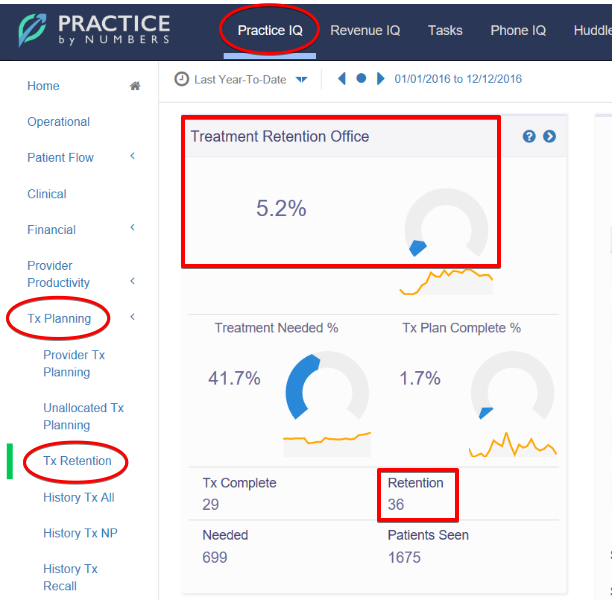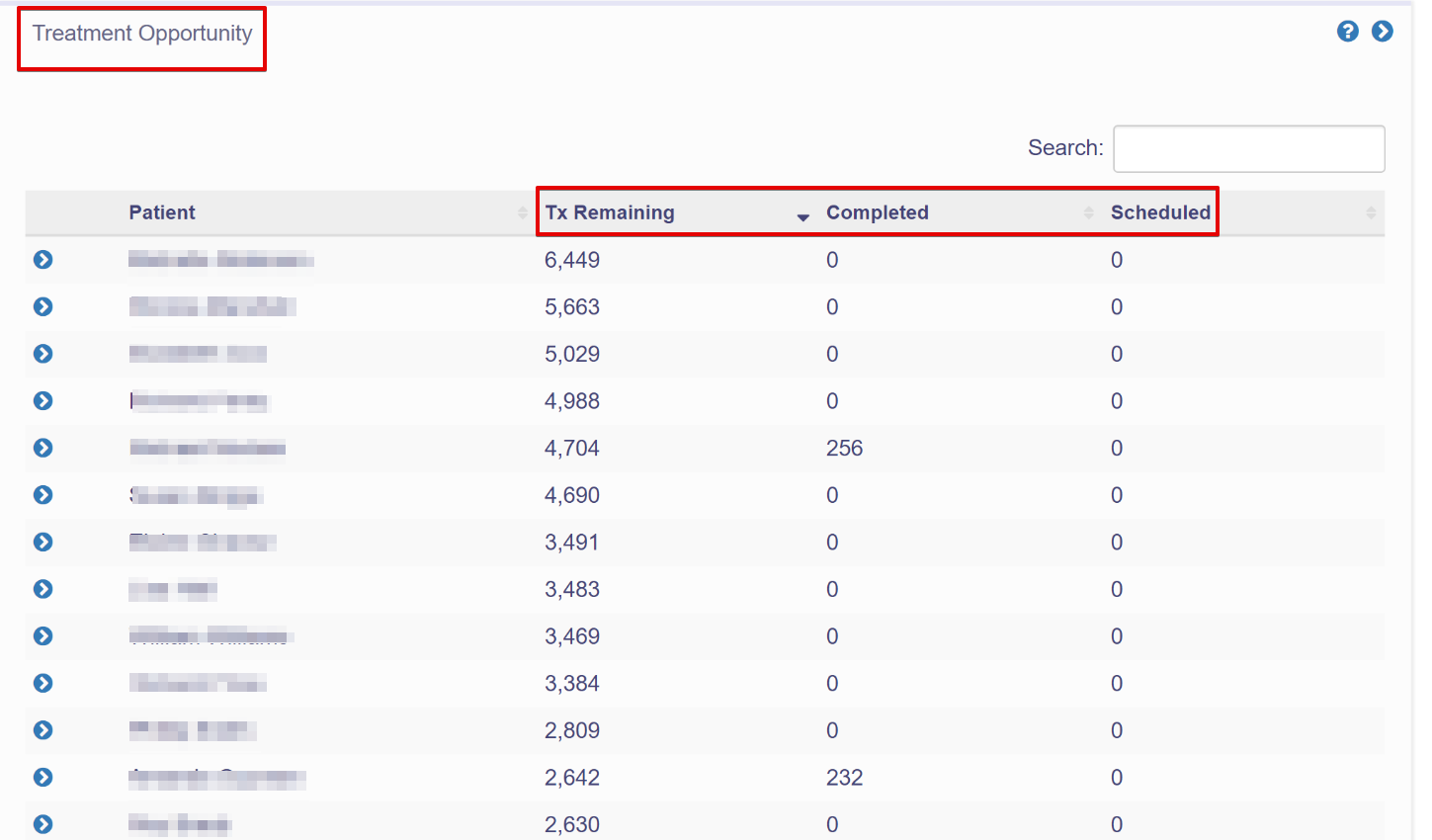Learn how to identify and improve Treatment Retention rates in your dental practice.
Why is Treatment Retention important for your practice?
Knowing your treatment retention numbers is important to identify the number of patients who return for their treatment and act on those who do not. A successful dental practice will have patients accepting treatment plans and returning for ongoing dental care.
A hygienist can play a big role in treatment retention for the practice since the hygienist spends more time with the patient than a dentist. Hygienists should use recurring patient hygiene visits to educate patients to complete their pending treatment in collaboration with the dentist. Practices should define a process for scheduling patients with pending treatment plans and offer them a convincing reason to schedule and complete their pending treatments.
How to find Treatment Retention rates?
On your PracticeIQ page, start by clicking on TX Planning. In there, click on the Tx Retention subsection to find the Treatment Retention Office KPI panel.
-
Treatment Retention Office % is the percentage of patients seen with at least one treatment plan item who completed or scheduled another treatment plan item.
-
Treatment Retention # is the number of patients seen with at least one treatment plan item who completed or scheduled another treatment plan item.
Please see a demo practice’s Treatment Retention KPI panel below:

For example - In the demo practice above, the number of patients seen for the time period is 1675. Out of all the patients seen, 29 patients completed their treatment, which is 1.7% of the total patients seen.
In the time period selected, 699 patients still need some treatment that hasn’t been scheduled or completed. These patients have at least one pending treatment plan item. For this demo practice, the percentage of treatment needed is 41.7% of the total patients seen.
For the time period selected, the number of patients with at least one treatment plan item that completed or scheduled another treatment plan item is 36, which is 5.2% of the patients that needed treatment. By looking at the treatment retention %, you can identify what percentage of your patients are returning back for their pending treatment.
Treatment Remaining -
This list shows the treatment remaining for patients who came in the office for a periodic oral evaluation, topical application of fluoride, prophylaxis, bitewings - four films etc. A hygienist should use this opportunity to educate these patients about their treatment and schedule them for their pending treatment.
